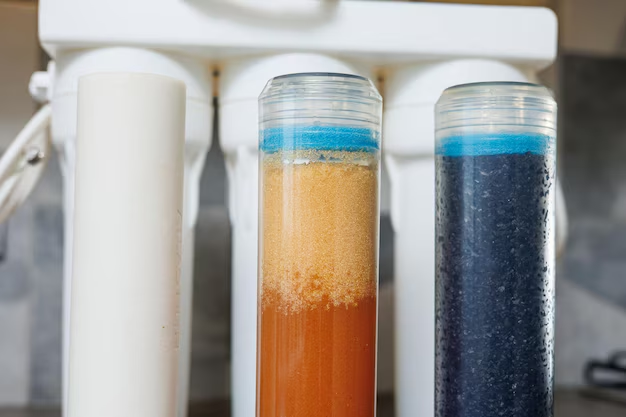Effortless Maintenance: Keep Your Fridge Water Filter Pristine
Is the water coming from your refrigerator tasting a bit off? It might be time to turn your attention to the water filter. Although often overlooked, the water filter in your refrigerator plays a critical role in ensuring that your drinking water is pure and refreshing. Regular cleaning and maintenance keep it functioning optimally, so let’s dive into everything you need to know about how to clean your fridge water filter effectively.
🌟 Why Regular Maintenance Matters
Cleaning your water filter is not just about taste; it’s about health, efficiency, and longevity. Over time, water filters can become clogged with contaminants such as sediment, chlorine, and other impurities that degrade water quality. This can cause the water to have an unpleasant taste and odor, and can even slow down the water dispenser. Regular maintenance ensures:
- Better tasting and safer water: Removing impurities improves the flavor and safety of your drinking water.
- Enhanced efficiency: A clean filter allows water to flow freely, reducing the strain on your refrigerator’s water dispensing system.
- Prolonged appliance life: Regular maintenance can extend the life of your refrigerator by preventing overflow and leaks.
🛠️ How Often Should You Clean Your Fridge Water Filter?
Most experts agree that you should replace your refrigerator water filter every six months. However, this can vary depending on the water quality in your area and how often you use the dispenser. If you notice a change in taste or smell or a decrease in water flow, it might be time to clean or replace the filter sooner.
📑 A Step-by-Step Guide to Cleaning Your Fridge Water Filter
Step 1: Gather Necessary Supplies
Before you get started, make sure you have everything you need. Here’s a list of supplies:
- Cleaning cloth
- White vinegar or dish soap
- A small brush or sponge
- A towel or drip pan
Step 2: Locate and Remove the Water Filter
Most refrigerator water filters are located either at the base of the fridge or inside the upper right corner. Here’s how you can typically remove it:
- Turn off the water supply to prevent any accidental leaks.
- Locate the filter compartment. This could require you to remove a cover or panel inside the fridge.
- Twist or pull the filter out according to your model’s instructions.
Step 3: Cleaning the Filter
If your filter is reusable, follow these cleaning steps:
- Soak the Filter: Fill a bowl with a mixture of water and white vinegar or dish soap. Soak the filter for about 10-15 minutes to help loosen any stubborn debris.
- Scrub the Filter: Using a brush or sponge, gently scrub the filter to get rid of any accumulated impurities.
- Rinse Thoroughly: Run the filter under running water to remove any residual soap or vinegar. Make sure the water runs clear before stopping.
Step 4: Reinsert the Filter
Once your filter is clean:
- Dry the Filter: Use a towel to pat it dry or let it air dry completely.
- Reinstall the Filter: Fit the filter back into its compartment, ensuring it is properly aligned and secured.
- Turn the Water Supply Back On: Ensure there are no leaks by running the water dispenser for a few minutes.
📝 Tips for Optimal Water Filter Performance
- Mark Your Calendar: Stay on top of filter changes by marking your calendar or setting reminders on your phone.
- Use High-Quality Filters: Investing in reputable filters can improve performance and longevity.
- Inspect Filter Housing: Regularly check the filter housing for any signs of damage or mold.
🔍 Understanding Different Filter Types
Not all filters are created equal. Here are the common types:
- Carbon Block Filters: Known for effectively removing chlorine and improving taste.
- Granular Activated Carbon Filters: Better for faster flow rates, though they may not last as long.
- Reverse Osmosis Filters: These are often part of larger filtration systems providing comprehensive purification.
🛑 Common Mistakes to Avoid
- Neglecting to Turn Off the Water Supply: This can cause unwanted messes and even damage.
- Using the Wrong Cleaning Products: Avoid harsh chemicals that could damage the filter.
- Ignoring the Manufacturer’s Instructions: Each model is different, so be sure to check the guidelines specific to your refrigerator.
🔧 Troubleshooting: What If Problems Persist?
If you’ve cleaned the filter but still encounter issues such as decreased water flow or poor taste, it might be time to replace it. Consider consulting your refrigerator’s manual or contacting customer service for further assistance if problems continue.
📋 Key Takeaways: Keeping Your Water Filter Spotless
Here's a quick summary to keep your refrigerator’s water filter in top shape:
- 🗓️ Replace every 6 months or when you notice taste/flow issues.
- 🧽 Use vinegar and a small brush for effective cleaning.
- 🚫 Avoid harsh chemicals to prevent damage to the filter.
- 🔍 Inspect regularly for any signs of damage or mold.
- 📚 Read and follow your refrigerator’s instructions for best results.
Regularly maintaining and cleaning your refrigerator water filter is a simple yet crucial task. Not only will it ensure your water tastes clean and fresh, but it will also extend the life of your appliance. With these steps and tips, you’ll keep your refrigerator in great working order and enjoy fresh-tasting water every day. Remember, a little maintenance goes a long way in creating a healthier home environment.
